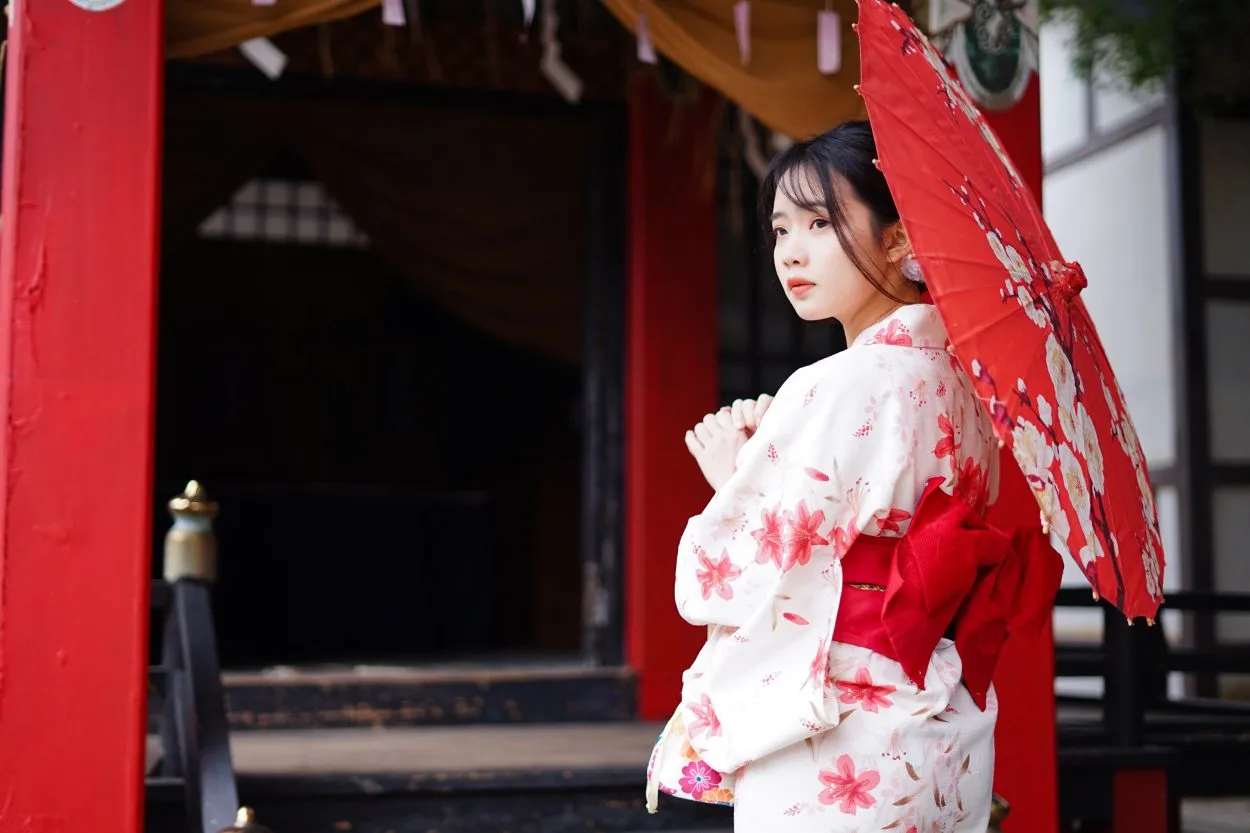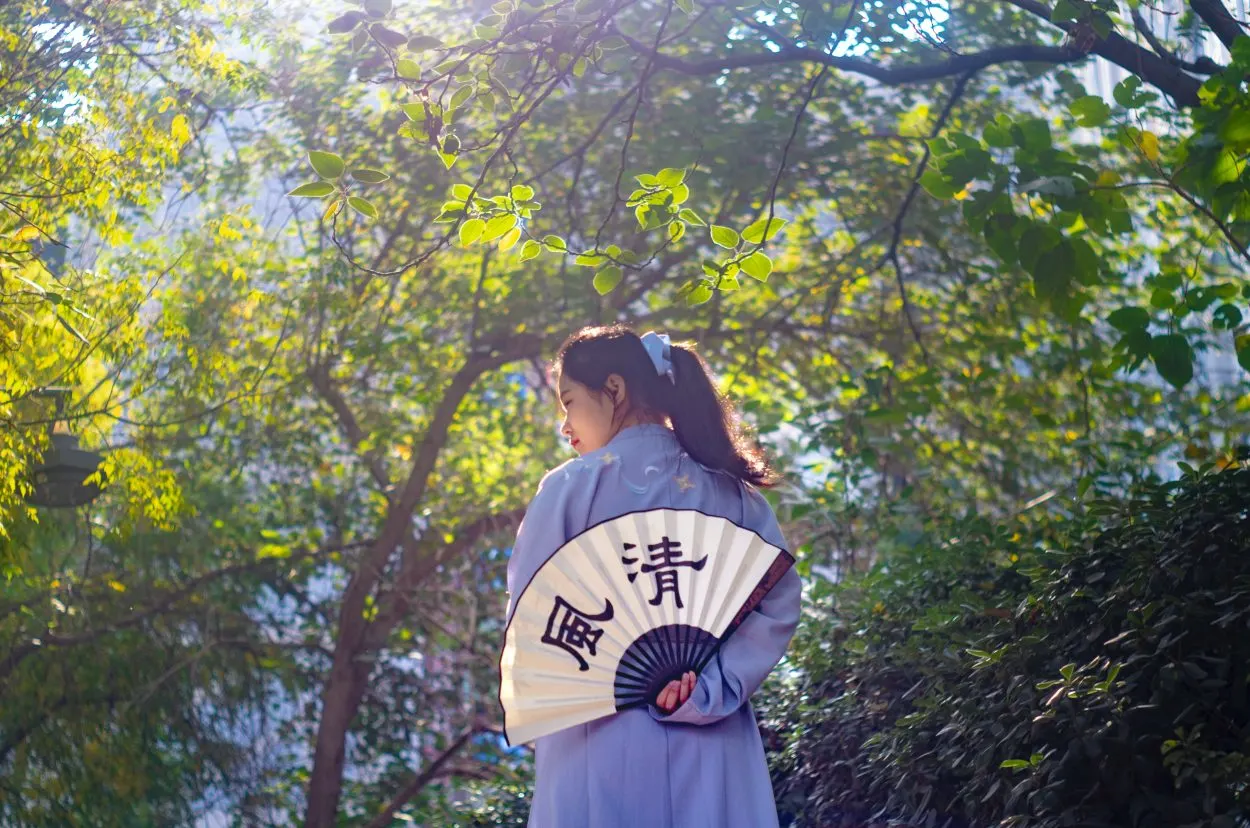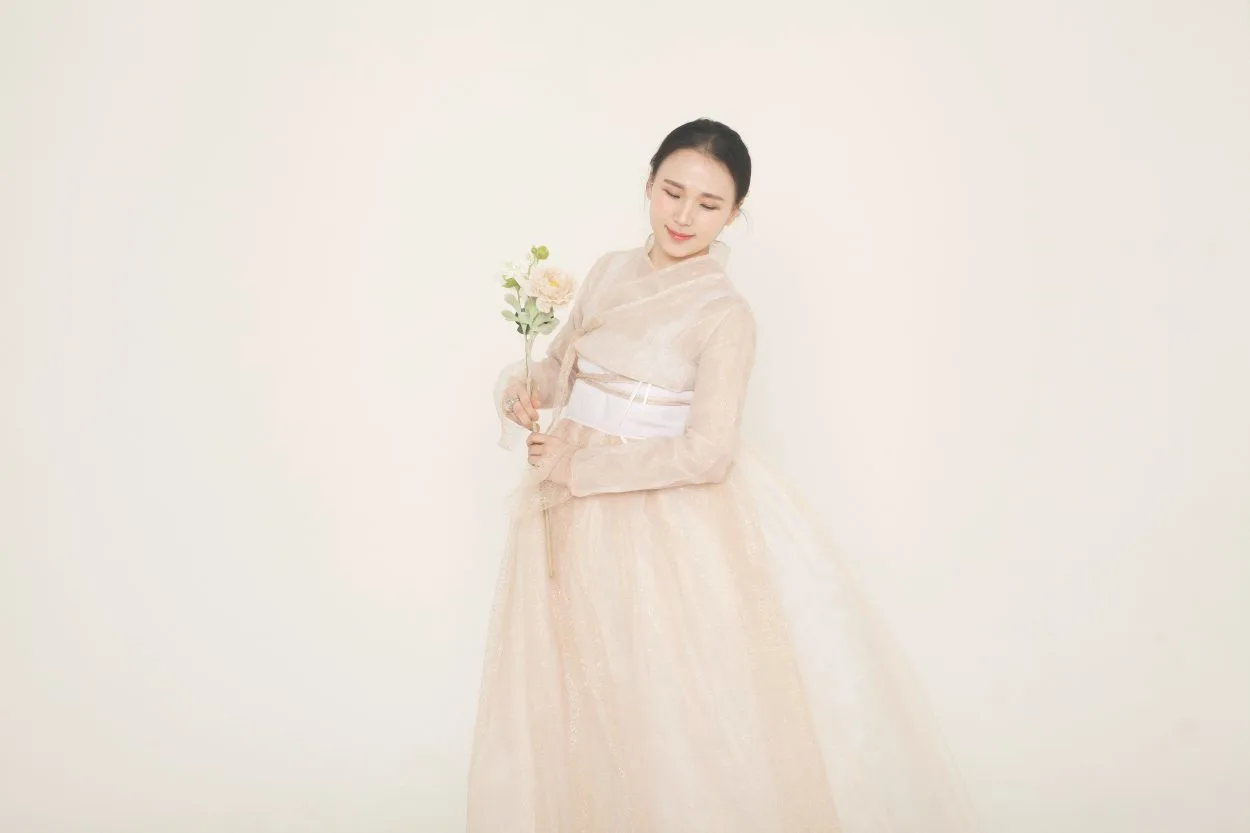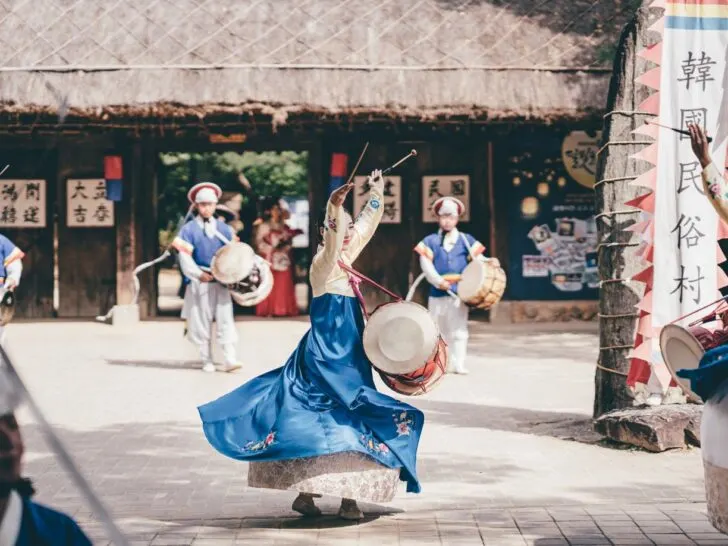Every culture has its own style of clothing, considered ethnic clothing now, only to be worn on special occasions as Western clothing has spread its roots in almost every country. Three of the many cultural clothing we will discuss are Chinese Hanfu, Korean Hanbok, and Japanese Wafuku.
- Chinese Hanfu
Hanfu, written in simplified Chinese as 汉服; and in traditional Chinese as 漢服, is the traditional styling of clothing which was worn by the people known as Han Chinese. Hanfu consists of a robe or a jacket worn as the upper garment and a skirt worn as a lower garment. A Hanfu includes many more than just a jacket and a skirt; it includes accessories, like headwear, jewelry (yupei which is a jade pendant), traditional handheld fans, footwear, and belts.
- Korean Hanbok
The Hanbok in South Korea and Chosŏn-ot in North Korea is the traditional styling of clothing in Korea, and the term “hanbok” itself means “Korean clothing”. The hanbok comprises the jeogori jacket, baji pants, chima skirt, and the po coat. This basic structure was designed to make it easy for people to move, and to this day, it remains the same.
Hanbok is worn at formal or semi-formal events, like festivals or ceremonies. The South Korean Ministry of Culture, Sports and Tourism established a day in 1996 called “Hanbok Day” to encourage citizens of South Korea to wear the Hanbok.
- Japanese Wafuku

Wafuku is the traditional clothing of Japan, however, in modern times Wafuku is regarded as a Japanese national costume. However, As Western influences made their way into Japan, wearing traditionally styled clothing became less common with time. Japanese people wear traditional clothing solely for important events, like weddings or ceremonies. Although Wafuku is still considered a symbol of Japanese culture.
- Differences among Chinese Hanfu, Korean Hanbok, and Japanese Wafuku.
The first difference between these three cultural clothing is that the Han Chinese still wear Chinese Hanfu. Still, Korea and Japan wear their traditional clothing Hanbok and Wafuku, respectively, for important events, like weddings or ceremonies only.
If we talk about the difference in designs, the collar of a Hanfu is of Y or V shape, while the collar of a Hanbok is usually a V-neck with a wide bow tie. The upper outer garment of a Hanfu dress is attached to it, whereas the upper outer garment of a Hanbok is outside, which covers the skirt, and the hem is wide and fluffy. the design of Wafuku is quite different compared to Hanfu and Hanbok. The Wafuku is of T shape, wrapping the front garment with square sleeves and a rectangular body. It’s worn with a wide sash (obi), zōri sandals, and tabi socks.
Keep reading to know more.
What is a Chinese Hanfu?

Hanfu is a traditional clothing of China worn by the Han Chinese. It consists of a robe or a jacket as the upper garment and a skirt as the lower garment; in addition, it includes accessories, like headwear, belts, jewelry (yupei, which is a jade pendant), footwear, and handheld fans.
Today, Hanfu is recognized as the traditional clothing of an ethnic group called Han ( The Han Chinese is an East Asian ethnic group and nation native to China). Among young Han Chinese of China and the overseas Chinese diaspora, it’s experiencing a growing fashion revival. Following the Han dynasty, hanfu evolved into many styles using fabrics. Moreover, the traditional clothing of many neighboring cultures was influenced by Hanfu, such as the Korean hanbok, the Okinawan ryusou, the Vietnamese áo giao lĩnh, and the Japanese kimono.
With time, Han Chinese clothing has evolved; earlier designs were gender-neutral with simple cuts, and later garments consisted of multiple pieces, with men wearing pants and women wearing skirts.
Women’s clothing accentuates the natural curves by wrapping the upper garment lapels or binding with sashes at the waist. Factors like beliefs, religions, wars, and the emperor’s personal liking played a huge part in the fashion of ancient China. Hanfu encompasses all the traditional clothing classifications of more than three millennia. Every dynasty has different dress codes, reflecting the socio-cultural environment of the times. Additionally, each dynasty favored certain specific colors.
What is Korean Hanbok?

In South Korea, it’s known as hanbok and Chosŏn-ot in North Korea. The hanbok is the traditional clothing of Korea and literally, the term “hanbok” means “Korean clothing”. The hanbok traces back to the Three Kingdoms of Korea (1st century BC–7th century AD), with its roots rooted in the people of northern Korea and Manchuria.
The hanbok’s early forms can be seen in the incredible art of the Goguryeo tomb mural; the earliest mural painting dates to the 5th century. From this time, the structure of the hanbok consisted of the jeogori jacket, baji pants, chima skirt, and the po coat, and this basic structure was designed to provide ease of movement and integrate several motifs of shamanistic nature. Moreover, the features of the hanbok remain relatively the same to this day. However, the hanboks, which are worn today, are patterned after the Joseon dynasty.
What is Japanese Wafuku?
Wafuku is the name of the traditional clothing of Japan, but Wafuku is regarded as the Japanese national costume now. Wafuku was coined in the Meiji period to indicate Japanese clothing in contrast to Western clothing. Basically, Wafuku ‘和服’ is used to differentiate Japanese clothing from other clothing.
The modern Wafuku are made for children, women, and men, there are informal and formal Wafuku for females and males, and Wafuku don’t come in unisex designs. Female informal Wafuku are Komon, Iromuji, and Yukata, while Male Informal Wafuku are more:
- Iromuji
- Yukata
- Samue
- Jinbei
- Tanzen
- Happi.
Is hanfu and hanbok the same?

Hanfu is the Chinese traditional clothing, and hanbok is the traditional clothing of Korea; both can be mixed up as it’s said that Hanfu influenced the traditional clothing of many neighboring cultures, and the list contains the Korean hanbok. However, both have differences that make them different from one another.
The first difference is that the hanfu and hanbok are traditional clothing in China and Korea, respectively. Moreover, hanfu is still worn by the Han Chinese, while hanbok is worn by the Koreans only during important events.
The Hanfu design: the collar of the Hanfu is of Y or V shape, the upper outer garment of the dress is attached to it, and the top length is longer than the Korean Hanbok. Moreover, these traditional clothes are straight down, this style is referred to as “being upright” as it was a message from the ancestors of China that they delivered through the designs. Hanfu comes in cold hues, such as blue or green, as the tradition taught them to be humble.
The Hanbok design: usually, the collar is V-neck with a wide bow tie, and the upper outer garment of the dress is outside, covering the skirt, and the hem is wide and fluffy. In addition, the top length is much shorter than in Chinese Hanfu. The Hanbok is of conical shape like the modern bubble skirt, and it comes in vibrant colors with simple patterned lines and without pockets. These various hues of the colors symbolize a person’s social position and marital status.
Does Hanfu inspire Hanbok?
Korean hanbok is one of the traditional pieces of clothing that were influenced by its neighboring country’s traditional clothing known as the Chinese hanfu. Moreover, people who know little about these traditional clothing have found themselves confused, but it’s justified as they are influenced by one another and can seem similar.
The hanfu inspired Hanbok, but most people claim it was copied, which isn’t true. Both of them have their differences in significance as well as the design.
Here is a video that explains how Hanbok isn’t a copy of Hanfu.
Along with Korean hanbok, other neighboring countries were also inspired by the traditional clothing of China called hanfu including the Okinawan ryusou, the Vietnamese áo giao lĩnh, and the Japanese kimono.
Although the hanbok was inspired by hanfu, both have great differences between them and here is a table for those differences.
| Korean Hanbok | Chinese Hanfu |
| Hanbok comes in vibrant colors and its various hues of the colors symbolize a one’s social position and marital status | Hanfu are in cold hues, like blue or green, as the tradition teaches them to be humble |
| The basic structure of hanbok was designed to give ease of movement | Female hanfu is wrapped with lapels or bound with sashes at the waist in order to accentuate one’s natural curves |
| Design: V-neck with a wide bow tie, the upper outer garment is outside covering the skirt, the hem is wide and fluffy, and the length of the top is much shorter than Chinese Hanfu top | Design: Y or V shape collar, the upper outer garment of the dress is attached to it, and the length of the top is longer than the Korean Hanbok top. |
Is Wafuku the same as Kimono?

The term “Kimono” covers the whole sense of clothing and Wafuku is used to differentiate Japanese clothing from other clothing.
The meaning of Kimono is ‘thing to wear’, and it was used to refer to clothing generally before the Western clothing style made its way into Japan. As more people were starting to adapt to Western-style clothes, the term Wafuku was coined to indicate the traditional clothing of Japan in contrast to Western-style clothes.
The word “Kimono” has two meanings, the first meaning is Wafuku, and the second meaning is clothing. When a mother says to her naked child, “Wear a Kimono, ” she tells her child to clothe himself/herself. “Wear kimono” can mean clothing or the traditional clothing of Japan. It depends on the listener’s generation and the dialect that the listener uses.
To Conclude
- Chinese Hanfu, Korean Hanbok, and Japanese Wafuku represent traditional ethnic clothing. They originate from East Asia.
- Chinese Hanfu includes a robe, jacket, skirt, accessories, and jewelry.
- Korean Hanbok comprises a jeogori jacket, baji pants, chima skirt, and po coat.
- Japanese Wafuku, also known as kimono, represents Japanese national costume.
- The Han Chinese continue to wear Hanfu. Hanbok and Wafuku, on the other hand, are reserved for special occasions.
- These traditional garments have distinct designs and colors.
- Hanfu influenced Hanbok, but both have unique characteristics.
- Wafuku, or kimono, distinguishes Japanese clothing from Western styles. It carries significant cultural importance in Japan.

